Traveling between the fjords and islands of Alaska’s Inside Passage, American Safari certainly lived up to its name last month for a luxe summer vacation that was cool in temperature and memory. Unlike African safaris, there were no lions or tigers here. 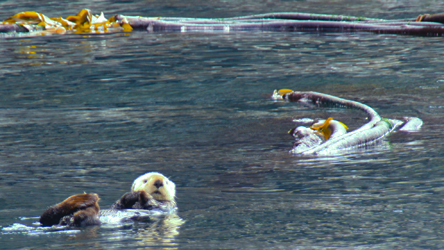 But bears? Oh, my! Yes!
But bears? Oh, my! Yes!
Whales? Yes! Minks? Yes! And otters, eagles, seals, moose, puffins and a myriad of other birds in spectacularly beautiful settings.
American Safari’s yacht, the Endeavour, carries up to 86 passengers and 35 crew who make sure the human wildlife is happy long before the happy hour. Life on this yacht features jacuzzis, massage rooms, a sauna, a well-stocked bar with creative cocktails of the day, and delicious surf, turf or vegetarian food options. Unpack once and settle in for wonder, and choices of adventure and relaxation.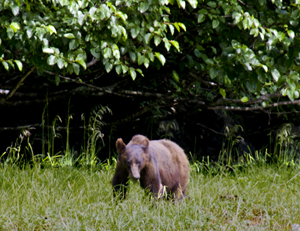
The Endeavour also transports a small fleet of two kinds of kayaks for maneuvering in the rougher Pacific ocean or in the calmer inlets, as well as between icebergs. Paddling over to a luscious waterfall, we saw this bear munching on highly nutritious sedge grass. Soon the salmon will be running, and the bear will reach for the fish.
The wildlife came to us the first morning of the cruise as the Endeavour headed to the Glacier National Park. Humpback whales blew columns of spray, then headed for the yacht, rewarding the early risers.  Several of us who showed up in the stern for the 6:30 yoga class stopped our own deep breathing to witness the beauties go under and along.
Several of us who showed up in the stern for the 6:30 yoga class stopped our own deep breathing to witness the beauties go under and along.
Another day while on shipboard, at a further distance, whales were in the front of the boat and on both sides. Photographers didn’t know where to turn. Here’s one image of a mother and baby breaching together.
Every morning and afternoon, passengers were offered choices of activities — usually different levels of hiking, kayaking or being taken out in Zodiac boats with a guide who knew how to seek animals. 
At meals, people shared their experiences. One group got very close to a moose. Another had dozens of sea otters play near their kayaks. Others were thrilled by the eagle spottings—watching the majestic birds swoop down on the water and sometimes carry away a fish. There were those who looked in vain for Big Foot, and plots were even hatched to create a big foot. But no Yeti yet.
A new animal sighting for me came by surprise. The captain of our Zodiac pointed toward the high tide mark of an island where a patch of bubble kelp littered the ground.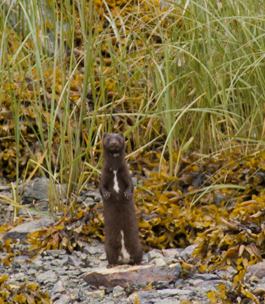 At least, that’s all I saw. Then people started to murmur quietly, but excitedly: “Oh how cute!” “There it is!”
At least, that’s all I saw. Then people started to murmur quietly, but excitedly: “Oh how cute!” “There it is!”
Finally, the foot-long creature moved, and I followed the motion. A mink! She seemed curious about us, too, and would stop and stand up like a periscope to take a look.
So much about Alaska is big. We saw dozens of thousand-foot waterfalls, tons of whales (literally), and even other cruise ships 20 times larger than ours. But to see this little furry thing boldly staring at us was delightful.
Even the landscape is wildly dynamic. Long glaciers over a 100 feet high, crack loudly and calve, sending tons of ice splashing, making waves, and thrilling those of us who had been watching and waiting.
If you ask my husband about our trip, he would tell you about all the food and drink options onboard. (In fact, he intends to do just that in an upcoming guest-column.) To my friends who care about “wellness,” I describe a very healthy, happy journey. (Stay tuned for more on that, too.) But we both agree that it was the wildlife that really made this a truly American Safari.
—Lisa TE Sonne for Luxury Travel Mavens
–photos by ©Lisa TE Sonne

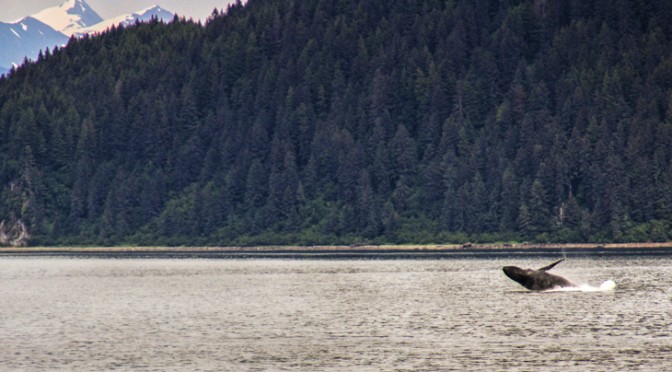
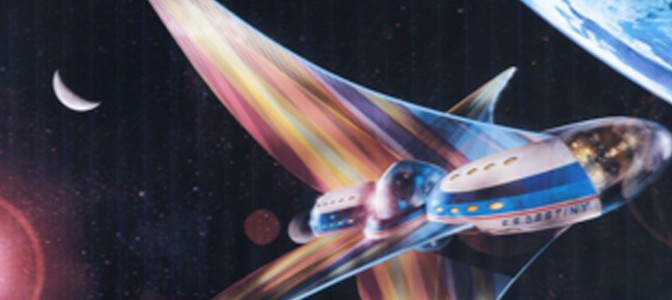
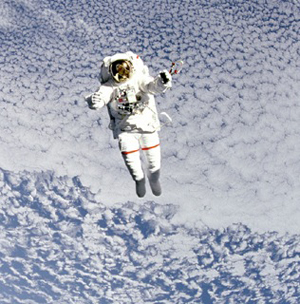

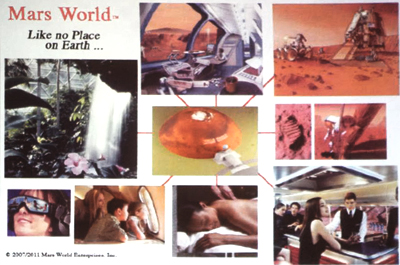
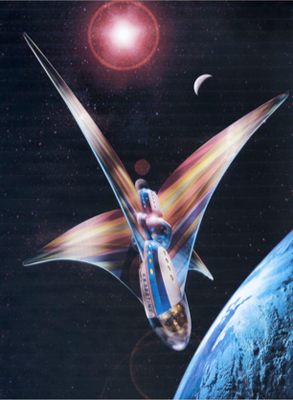




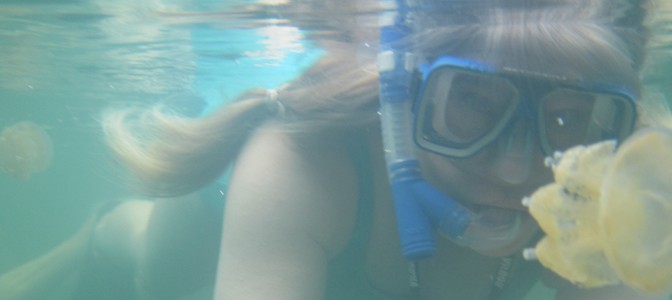






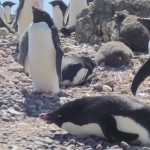
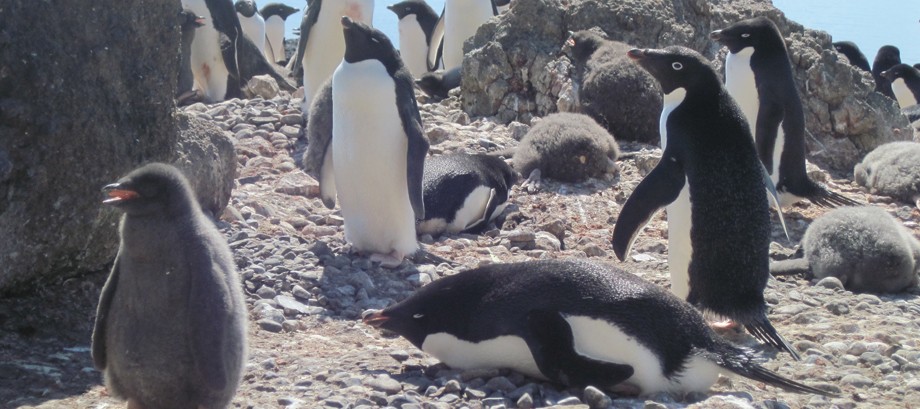
Recent Comments